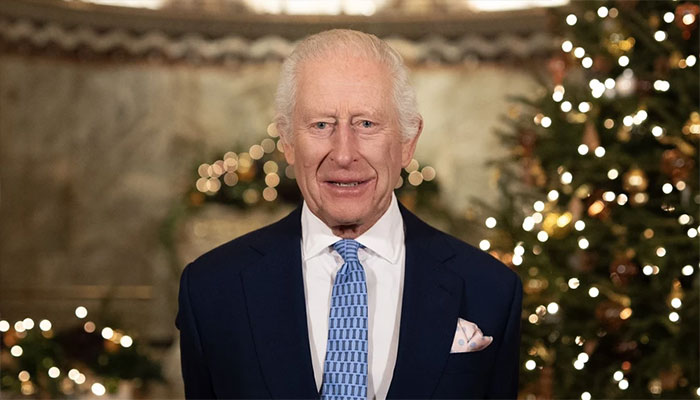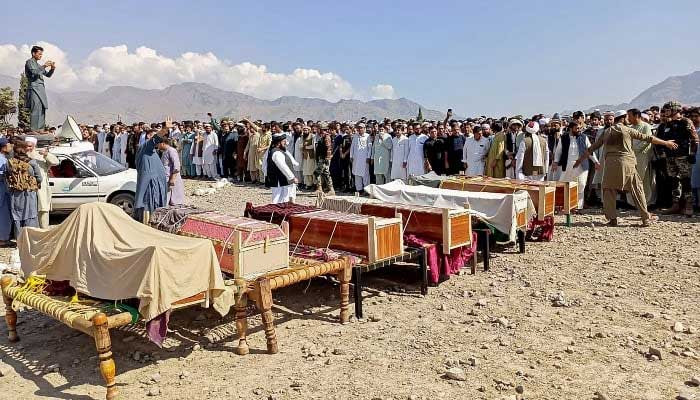Business
INFRASTRUCTURE: THE KARAKORAM CONNECTION
字号+ Author:Smart News Source:Travel 2025-01-13 03:39:52 I want to comment(0)
One of the most important resources endowed by nature to Pakistan is its geographical location. Pakistan is located at the confluence of South Asia, West Asia and Central Asia. It is connected in the south with the Arab World through the Arabian Sea, with Iran and Afghanistan in the west, with India in the east, and with west China in the north, while being in close proximity with Russia and several Central Asian states. Historically, the region to the north of Pakistan had largely been inaccessible due to natural barriers, in the form of some of the highest mountain ranges in the world. The opening of the Karakoram Highway (KKH) by the late 1970s eased those barriers. However, till the turn of the century, the use of this highway had been confined to strategic purposes only, in addition to a small niche of adventure tourism. Since the 2000s, concerted efforts have been made to tap into the economic benefits of Pakistan’s Karakoram connection, but without much success so far. It is important to understand the reasons the project has failed to deliver the expected rewards and to suggest a course of action. In 1966, Pakistan and China began construction of the 1300-kilometre-long KKH, which would connect the town of Hassan Abdal in Pakistan’s Punjab with the city of Kashgar in China’s Xinjiang region. The road was to cross the international border between the two countries at the Khunjerab Pass, at an altitude of 4,693 metres (15,397 feet), the highest border crossing in the world. The basic consideration for Pakistan to undertake this venture was its strategic value. As per Mahnaz Ispahani, in her book Roads and Rivals, Gen Ayub Khan considered the economic and commercial importance of the highway of only secondary importance. In view of the road’s strategic nature, the task of constructing Pakistan’s portion of 887 kilometres was assigned to the Pakistan Army, which established the Frontier Works Organisation (FWO) to carry out the assignment. With the opening of the lofty Karakoram Highway in the 1970s and its later co-option into the ambitious CPEC project, Pakistan hoped it would serve as a grand trade corridor for the region. So, why has the project failed to deliver the desired economic dividends and what can be done about it? The work in Pakistan started without much preparation, planning and surveying. “Arbitrary deadlines and very poor preparation from the Pakistani side, especially for the extreme altitude, dogged the early phases of a venture that was launched with extraordinarily minimal surveying or planning,” observed Andrew Small in his book The China-Pakistan Axis. This resulted in heavy loss of life of personnel, primarily labourers working at high altitudes in frosty conditions. Pakistan Army’s retired Brig Muhammad Mumtaz Khalid, who compiled the history of KKH in his two-volume work History of the Karakoram Highway, presented a similar picture. “Thoughtless urgency would become a peculiar feature of this mega project and, perhaps, for all future ones. Any presidential order, or for that matter any higher command dictates, would rarely be questioned by the corps’ top brass, regardless of the serious technical, financial and administrative problems, time constraints or frictions of terrain and weather.” For its part, China completed its assigned task of constructing the 413 kilometres in its territory well in time. As Pakistan was still struggling in the initial stages, China offered to help complete its part too — help that was accepted with gratitude — and the road was formally inaugurated in 1978. With Pakistan’s connection to the north open, it acquired the potential of becoming a grand trade corridor between the region in its north — comprising China, and through it, Russia and the Central Asian states — and the Indian Ocean in the south, providing those countries easy access to the Middle East and Africa. In between these two ends, this grand trade corridor had the potential to be linked with countries such as India in the east and Iran and Afghanistan in the west. But these considerations were given little thought before Gen Pervez Musharaf’s rule, when Pakistan developed a plan to utilise its connectivity potential for economic purposes. Accordingly, on July 28, 2006, Pakistan’s Planning Commission gave an 84-slide presentation to the president and the prime minister on the subject of ‘Trade, Energy, Transport and Industrial Corridor.’ This basic plan later graduated to the form of the China-Pakistan Economic Corridor (CPEC) in 2013. This plan invoked interest in China too, as its fast developing western region was at less than half the distance from Pakistani ports than China’s own ports in the east and southeast. It also promised China easier access to the Middle East and Africa, in addition to serving as a sort of insurance, in case of any issue with China’s usual trade routes in the South China Sea. The linchpin in all these plans and programmes was the KKH, whose expansion and upgradation was essential to put them in operation. This required extensive financial and technical resources, which China agreed to provide, and work started in 2006. When the upgraded road was about to open, a huge landslide in January 2010 resulted in the creation of a 100-metre deep and over 20-kilometres wide Attabad lake, which submerged a large portion of the highway. This made the road dysfunctional, as the goods transported through trucks had to be sailed for over 20 kilometres of the lake through small boats. This situation was redressed by constructing a 24-kilometre redesigned and realigned piece of road, making it operational in September 2015, after an interval of a little less than six years. However, despite all these efforts and expenses, the Karakoram connection is yet to deliver the desired economic dividends. The reason for this time is the steep decline in the security situation in Pakistan, where terrorism and terrorist activities have become the order of the day. The situation requires a serious rethink because, in the present security conditions, there is very little likelihood for the venture to achieve its desired results. Secondly, the geostrategic and geopolitical situation in the region is also a big hindrance in tapping the full potential of this connection. For instance, in many Central Asian states, located in close proximity to the KKH, there are pockets of religious militancy, which make partnering countries extra cautious about movement of goods and persons across their borders. Similarly, bilateral relations between China and India, Pakistan and India and Pakistan and Afghanistan, coupled with US sanctions against Iran, are major stumbling blocks. Thirdly, the insufficient and inefficient road and railway infrastructure, connecting the KKH with the rest of the country, is also one of the reasons for slowing down the transportation of goods. In the initial CPEC documents, three routes — eastern, western and central — were suggested. However, at present, only the eastern road route is partially operational, with a more than 300-kilometre void between Sukkur and Hyderabad. This issue also needs to be addressed on an urgent basis. Fourthly, Pakistan is suffering from acute political instability for quite some time, where frequent and unforeseen agitations and sit-ins result in closure of roads. Political instability also results in frequent changes in government’s trade, commerce and fiscal policies, which too are harmful for creating an environment that is business- and trade-friendly. Pakistan’s establishment and political parties should sit together and chalk out long-term economic policies and programmes with consensus, to be followed as a sacred national trust. Fifthly, KKH is located in a geologically active region, making the road vulnerable to abrupt closures due to heavy snowfall, mudslides, rockfalls and avalanches etc. There should be a fast-track maintenance mechanism to keep its closures to the bare minimum. To sum up, it can be said that Pakistan’s Karakoram connection holds substantial potential for the country’s economic prosperity and development, provided it is accorded due preference in the nation’s list of priorities.
1.This site adheres to industry standards, and any reposted articles will clearly indicate the author and source;
 Related Articles
Related Articles-
Unesco’s ‘enhanced protection’ for 34 Lebanon heritage sites
2025-01-13 03:19
-
روہت شرما کی ٹیسٹ کرکٹ سے ریٹائرمنٹ کی راوی شاستری کی پیش گوئی
2025-01-13 02:33
-
رِکِلٹن کی ڈبل سنچری کی بدولت جنوبی افریقہ نے پاکستان کے خلاف 429/5 کا مجموعہ بنایا۔
2025-01-13 02:19
-
رِکِلٹن کی ڈبل سنچری کی بدولت جنوبی افریقہ نے پاکستان کے خلاف 429/5 کا مجموعہ بنایا۔
2025-01-13 02:17
 User Reviews
User Reviews Recommended Reads
Recommended Reads Hot Information
Hot Information- Misusing a facility
- روہت شرما کی ٹیسٹ کرکٹ سے ریٹائرمنٹ کی راوی شاستری کی پیش گوئی
- رِکِلٹن کی ڈبل سنچری کی بدولت جنوبی افریقہ نے پاکستان کے خلاف 429/5 کا مجموعہ بنایا۔
- دوسرے جنوبی افریقہ ٹیسٹ کے دوران سائم ایوب کے گھٹنے میں چوٹ لگی۔
- Misusing a facility
- دوسرے جنوبی افریقہ ٹیسٹ کے دوران سائم ایوب کے گھٹنے میں چوٹ لگی۔
- دوسرے جنوبی افریقہ ٹیسٹ کے دوران سائم ایوب کے گھٹنے میں چوٹ لگی۔
- رِکِلٹن کی ڈبل سنچری کی بدولت جنوبی افریقہ نے پاکستان کے خلاف 429/5 کا مجموعہ بنایا۔
- Nepra estimates Rs1.6 fall in average tariff
 Abont US
Abont US
Follow our WhatasApp account to stay updated with the latest exciting content










